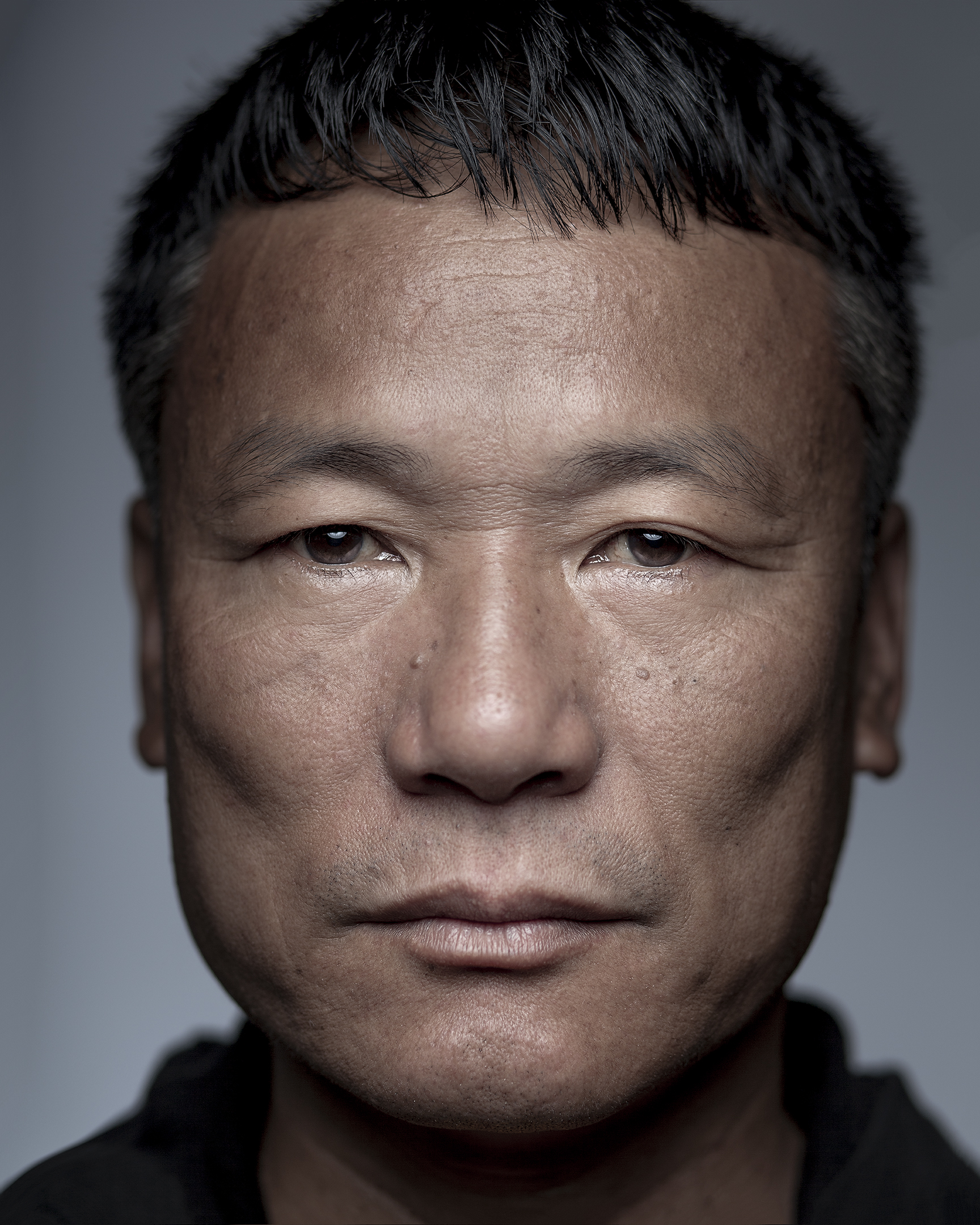























worked a 13-acre farm in Bhutan. They grew corn, wheat, buckwheat and rice. The children were all very young when they were forced migrate to the refugee camp. The army held Kapil for 8 hours, leaving him with the understanding that if he and his family were to forgo Hinduism, stop speaking Nepali, and were to dress like the northerners, he could stay. Otherwise, threats would continue. Kapil would have been tortured, but he was a friend of a police officer, who released him. The family registered in the refugee camp in June of 1992. He was able to work illegally as a mason outside the refugee camp. On one job, he worked for 6 months, for which his employer refused to pay him. The refugee camp did not really supply enough food to keep his children healthy. With his work, Kapil could earn money for meat and vegetables. During the rainy season their bamboo home with its thatched roof would blow away, so they would have to rebuild it. In 2008, there was a big fire in the camp that burned their home as well as those of their neighbors. Fire spread rapidly among these bamboo huts. Within half an hour all the homes they could see were burned. Their documents and money were destroyed when their hut went up in flames. They lost a bicycle too that they used to go into town for supplies. In October 2014, the family were resettled to the US. Kapil and his family are happy to be in Columbus, where his children are working steadily.

was a farmer in Bhutan, who grew potatoes, tomatoes, pineapple and rice. His family also raised goats and cattle. Because he had watched neighbors being arrested for staying in Bhutan after the government began pushing ethnic Nepalis out, Hosta felt desperate when the army came to his house. He escaped through a rear window. The family was crying as they left Bhutan. Because rations were inadequate in the refugee camp in Nepal, Hosta worked illegally as a construction worker and a road builder outside of its boundaries. He was paid less than Nepali citizens, but his wages allowed him to supplement his family’s diet. Hosta’s family has purchased a home in Columbus with room for a garden in the back yard. The family is pleased to be able grow even a little of its own food. Bhutanese-Nepali people like to have at least a small garden in their American yards, because some plants are sacred to them, such as marigolds, whose seemingly infinite number of pedals represent the divine. They also grow medicinal plants, such as bitter gourd, which reduces blood pressure. They grow plants to season their food, such as mustard and hot peppers, which they love. Everything they grew in Bhutan was fresh and organic, which tasted different than food purchased from the grocery. It is interesting to note that in the jungle, their cattle could eat windfall avocadoes. The hat Hosta is wearing is a part of a traditional Bhutanese-Nepali costume.

A college graduate, worked for the government in Bhutan. Om remembers peaceful protests against the policy of “one language, one culture” that were put down by the military. Many were arrested, even those caught not wearing the thick robes of the northerners. Unlike most people living in Bhutan, who were either Buddhist or Hindu, Om, belongs to the Kirant religion. It is practiced by about 3% of the Nepali population. The religion is also practiced in China and India. Practitioners worship nature. They believe in a female deity, who controls the universe. Kirant shares with Buddhism and other eastern religions a practice of meditation. ‘Om’ is the mystical word known to all men, which is chanted during meditation. Consequently, Om chants his own name as he meditates every morning. Om taught English in Nepal. On June 1, 2016, Om was resettled to the US. His first job was at Sugar Creek Meat Packing company in Washington Courthouse, which required a long commute. He has since been interviewed by Columbus Public Schools, where he hopes to be able to tutor Bhutanese-Nepali children as they adjust to the American school system.

Was a farmer with her husband in Bhutan. They worked a 10-acre plot of land, but not all of it was tillable, because it was on the side of a mountain. Lal has 6 sons. She felt terrible, as if she would like to die, when she was forced to leave Bhutan for the refugee camp. 3 of Lal’s sons were old enough to work construction outside the camp and support her during her long residence there. Unfortunately, Lal’s husband was struck with cancer in the camp. This was the second time Lal felt profound shock and loss in her life. The experience of her husband’s illness and death inspired Lal to convert from Hinduism to Christianity. 3 of Lal’s sons are still in the refugee camp, 2 live with her, and 1 lives in Pennsylvania.